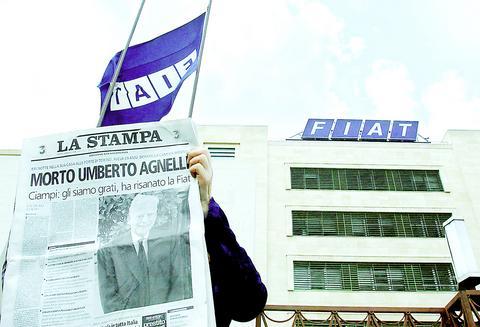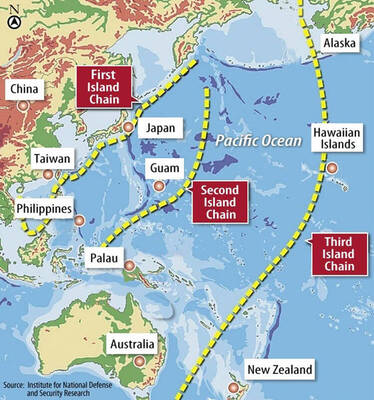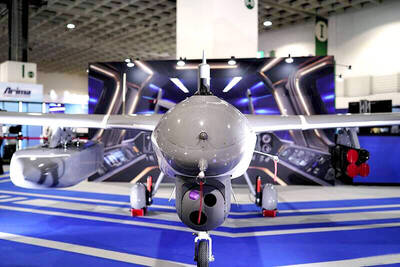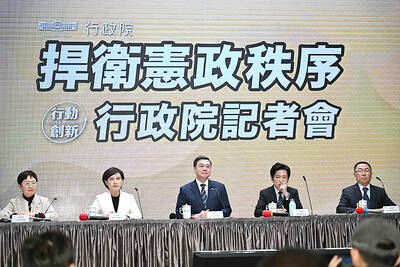Umberto Agnelli, who stepped into the limelight at Fiat, the Italian auto empire, after a lifetime in the shadow of relatives renowned for their flamboyance, died late on Thursday in the family's villa, La Mandria, outside Turin. He was 69.
The cause was lymphoma, a cancer of the lymph nodes, a Fiat spokesman, Richard Gadeselli, said on Friday. Agnelli's illness was disclosed less than a month ago.

PHOTO: AFP
The death of Agnelli in many ways severed the last connection to a time that a generation of Italians remember as a sort of glory days when business boomed, tiny Fiat 500 cars crammed nearly every Italian street and the sprawling Agnelli clan dominated the public's imagination with a jet-set style that has often been compared to the Kennedys.
That style was personified by Agnelli's older brother, Giovanni, called Gianni, who died 16 months ago, also of cancer, and overshadowed his less flashy younger brother for decades.
While Umberto Agnelli's death closes the chapter on a generation of Agnelli lore, it also leaves a blurry future for Fiat, a company that is increasingly saddled with financial troubles and faces the threat of foreclosure on its more than US$3 billion in loans. Its workers are protesting and striking against the threat of more job cuts.
Nevertheless, the country mourned the death of Agnelli on Friday.
As news of Agnelli's death spread Friday morning, Italians shook their heads on the streets and in coffee shops and expressed words of condolence. Prime Minister Silvio Berlusconi, in Rome, echoed those sentiments, saying he was "deeply saddened for the loss of a dear friend."
Umberto Agnelli was born on Nov. 1, 1934, in Lausanne, Switzerland, the son of Edoardo Agnelli and Princess Virginia Bourbon del Monte di San Faustino.
He was the grandson of Giovanni Agnelli, who founded the company as Fabbrica Italiana Automobili Torino in 1899.
At the height of its powers and, to a lesser measure today, the Agnellis wielded influence in politics, counting senators and government ministers among their ranks. They also continue to publish one of the country's leading newspapers, La Stampa, and field winning soccer and auto racing teams.
Agnelli's life intersected with Italian passions, from politics to soccer to fast cars.
He served as a senator of the Italian Republic, from 1976 to 1979, and was the honorary chairman of the Juventus soccer team, which is the most successful squad in Italian history. He was the past president of the Italian Football Association.
Agnelli is survived by his wife, Allegra; a son, Andrea; and a daughter, Anna.
It was only after Agnelli graduated from the University of Turin with a law degree that he joined the family's automotive enterprise. He was named president of the company's operations in France in 1965 and doubled its sales there in five years.
But the top job at Fiat was more elusive.
Agnelli was passed over for it several times by his brother, whose chairmanship spanned decades. Agnelli spent most of his years in less prominent jobs working for Agnelli family holding companies, which own 30 percent of Fiat. Under his watch, the family diversified into new businesses. In addition to the carmaking unit, Fiat now owns auto component companies as well as CNH Global, a farm and construction machinery operation; Iveco, a truck business; and Ferrari, the luxury carmaker.
Agnelli had only played a peripheral role at Fiat until being named chairman in February 2003, a month after the death of his older brother, who turned Fiat into a worldwide conglomerate and helped industrialize postwar Italy
Agnelli touched off a rally in Fiat's shares in 2002 when he suggested the company should sell its carmaking unit and invest in the conglomerate's other businesses. But Fiat instead kept the car unit, which accounts for 42 percent of the group's sales, and opted to sell more than US$7 billion in other assets.
Today, Fiat is still facing its worst financial crisis. It lost more than US$2 billion last year and about US$4 billion in 2002. Many of Italy's biggest banks pooled together to lend Fiat billions of dollars in 2002, and that loan could be converted into shares if certain goals are not met. That would dilute the Agnellis' controlling stake.
It is unclear who will lead the Fiat empire.
Agnelli's widely rumored successor, his grandnephew, John Elkann, 28, has been considered too young and inexperienced to take control. It was unclear Friday whether he would assume the role.
"The chairmanship is likely to stay in the family, but it doesn't seem possible that they could appoint Elkann because he is still far too young to take the position," said Nicolo Pini, a fund manager with Ifigest in Florence.
Even on the streets of Naples on Friday, hundreds of miles from the Agnellis' ancestral home and Fiat headquarters in Turin, Agnelli's death was on people's minds.
"It's half a century of history that's finished now," said Antonio Paone, 53, after he parked his red Fiat 500 onto the curb of a congested street.

The US government has signed defense cooperation agreements with Japan and the Philippines to boost the deterrence capabilities of countries in the first island chain, a report by the National Security Bureau (NSB) showed. The main countries on the first island chain include the two nations and Taiwan. The bureau is to present the report at a meeting of the legislature’s Foreign Affairs and National Defense Committee tomorrow. The US military has deployed Typhon missile systems to Japan’s Yamaguchi Prefecture and Zambales province in the Philippines during their joint military exercises. It has also installed NMESIS anti-ship systems in Japan’s Okinawa

‘WIN-WIN’: The Philippines, and central and eastern European countries are important potential drone cooperation partners, Minister of Foreign Affairs Lin Chia-lung said Minister of Foreign Affairs Lin Chia-lung (林佳龍) in an interview published yesterday confirmed that there are joint ventures between Taiwan and Poland in the drone industry. Lin made the remark in an exclusive interview with the Chinese-language Liberty Times (the Taipei Times’ sister paper). The government-backed Taiwan Excellence Drone International Business Opportunities Alliance and the Polish Chamber of Unmanned Systems on Wednesday last week signed a memorandum of understanding in Poland to develop a “non-China” supply chain for drones and work together on key technologies. Asked if Taiwan prioritized Poland among central and eastern European countries in drone collaboration, Lin

NO CONFIDENCE MOTION? The premier said that being toppled by the legislature for defending the Constitution would be a democratic badge of honor for him Premier Cho Jung-tai (卓榮泰) yesterday announced that the Cabinet would not countersign the amendments to the local revenue-sharing law passed by the Legislative Yuan last month. Cho said the decision not to countersign the amendments to the Act Governing the Allocation of Government Revenues and Expenditures (財政收支劃分法) was made in accordance with the Constitution. “The decision aims to safeguard our Constitution,” he said. The Constitution stipulates the president shall, in accordance with law, promulgate laws and issue mandates with the countersignature of the head of the Executive Yuan, or with the countersignatures of both the head of the Executive Yuan and ministers or

CABINET APPROVAL: People seeking assisted reproduction must be assessed to determine whether they would be adequate parents, the planned changes say Proposed amendments to the Assisted Reproduction Act (人工生殖法) advanced yesterday by the Executive Yuan would grant married lesbian couples and single women access to legal assisted reproductive services. The proposed revisions are “based on the fundamental principle of respecting women’s reproductive autonomy,” Cabinet spokesperson Michelle Lee (李慧芝) quoted Vice Premier Cheng Li-chiun (鄭麗君), who presided over a Cabinet meeting earlier yesterday, as saying at the briefing. The draft amendment would be submitted to the legislature for review. The Ministry of Health and Welfare, which proposed the amendments, said that experts on children’s rights, gender equality, law and medicine attended cross-disciplinary meetings, adding that